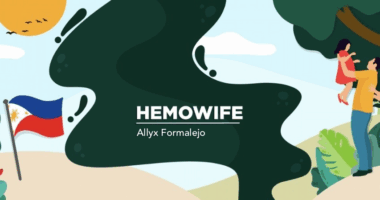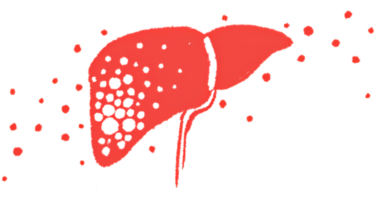What does a minor cut do to someone with hemophilia?
Clearing up some common misconceptions about minor wounds

One of the most pervasive and amusing misconceptions about hemophilia is that a person with the condition could bleed to death from a tiny paper cut. People often think that those with hemophilia must avoid everything that is sharp, which isn’t entirely accurate.
Hemophilia doesn’t cause people to bleed faster than usual. Rather, their blood doesn’t clot properly, so bleeding lasts longer than it would for someone without the condition. When someone like my husband, Jared, who has severe hemophilia B (factor IX deficiency), has a surface-level cut or similar wound, his blood initially gushes out as you’d expect. The difference is that it doesn’t stop easily.
The science of surface-level cuts
Let’s say a person who doesn’t have hemophilia gets a small cut while chopping food or handling tools in a workshop. The body springs into action to seal up the cut. Platelets rush to the site of injury, and a clotting cascade begins to do its job. In time, a plug forms over the wound, which eventually hardens into a scab.
For someone like Jared, the clotting cascade doesn’t immediately finish as it should. The wound bleeds longer, and the blood that collects around the wound has a dark red, jelly-like consistency. This clot is unstable and doesn’t effectively seal up the cut. The result is a scab that forms more slowly and appears thicker, darker, and scarier to the untrained eye. He has to be careful not to touch the clot, because it could dislodge the scab and start the healing process all over again.
Handling minor cuts with hemophilia
After being with Jared for over a decade, I’ve gotten used to seeing large amounts of blood come from relatively small wounds. While it looks different compared with my own injuries, it doesn’t alarm me anymore. I sometimes even compare the appearance of his surface bleeds to my monthly period. They look surprisingly similar! (Interestingly, period supplies happen to be extremely handy for helping to stop a surface bleed.)
We manage small cuts by applying minor pressure and covering the wound to protect it from possible infection. If the wound can’t be covered with a Band-Aid or gauze — such as on the scalp, which is covered by hair, or tricky locations between skin folds or joints that see frequent movement — he simply keeps an eye on the clot formation and disinfects the wound regularly. Promptly infusing factor IX concentrate, when available, can also help his body’s clotting mechanism kick in faster.
Living with hemophilia means navigating everyday situations with more caution. It’s not about avoiding everything that might cause a cut or scrape, but understanding how one’s body heals differently and adapting to that reality.
For people like Jared, this means taking extra steps to manage injuries and ensuring that minor wounds don’t escalate. With proper care and a bit of patience, surface wounds don’t have to be a source of fear or frustration — they’re just another part of life that requires thoughtful management.
Note: Hemophilia News Today is strictly a news and information website about the disease. It does not provide medical advice, diagnosis, or treatment. This content is not intended to be a substitute for professional medical advice, diagnosis, or treatment. Always seek the advice of your physician or another qualified health provider with any questions you may have regarding a medical condition. Never disregard professional medical advice or delay in seeking it because of something you have read on this website. The opinions expressed in this column are not those of Hemophilia News Today or its parent company, Bionews, and are intended to spark discussion about issues pertaining to hemophilia.








Bea Paulo
Hi Cza, thank you for sharing your family life and Jared’s. It is a source of inspiration and encouragement. If you don’t mind, I connected and followed you on LinkedIn. I am eager to learn more about Haemophilia as my partner has it too. God bless!